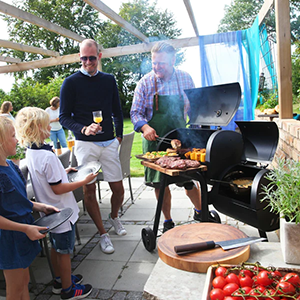Giant life tree

According to a legend of the Coast Salish First Nation in British Columbia, there was once an extraordinarily generous man who gave people everything they needed. When the Great Spirit saw that, he declared that if the man died, a great western red cedar would grow on the spot where he was buried and everything from that tree would be of use to all people.
Western red cedar is a species of tree that grows on the North American west coast, from Oregon to Alaska. The Dutch name is Giant Life Tree. The tree belongs to the cypress family and in its original habitat can grow as tall as 65 to 70 meters and reach a diameter of 3 to 7 meters. For the original inhabitants of the United States and Canada along the northern Pacific coast, western red cedar was vital. The wood was used for totem poles, canoes, huts and tools, among other things. From the bark and roots, for example, they made baskets, ropes, clothing, dishes, blankets and jewelry.

In addition, planks of western red cedar were used for food preparation and preservation. Heating the wood and cooking fish, meat and vegetables on it gave the food a specific smoky flavor.
Salmon in particular, one of the main food sources for the tribes along the Pacific coast, was very often prepared this way. By drying the fish after smoking, it had a long shelf life. The Pacific North West is known worldwide for cedar-smoked (wild) salmon, a true delicacy.







